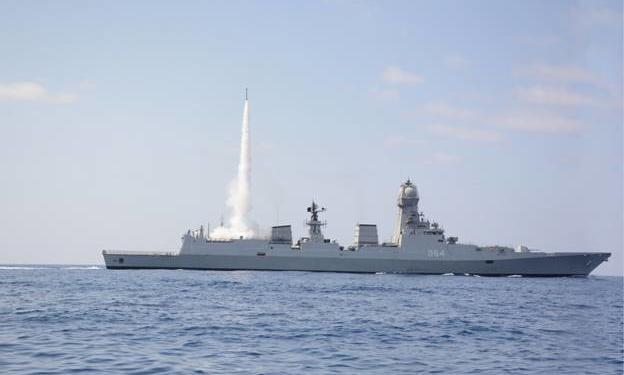As per latest reports, India has sought bids for the purchase of warships and support vessels for its Navy and Coast Guard in an attempt to ramp up its maritime firepower in the Indian Ocean region. This massive purchase includes the “Buy Indian” acquisition of six Next Generation Missile Vehicles (NGMV) for the Indian Navy. It also includes eight Fast Patrol Vessels (FPV), 12 Air Cushion Vehicles (ACV) and eight ammunition barges for the Coast Guard.
The NGMVs constitute a major portion of the acquisition. It forms an important part of the Indian Navy’s heritage. It is important to mention here that in the Indo-Pak war of 1971, three missile boats of the Indian Navy had launched the deadly Operation Trident on Karachi harbour that had sunk three Pakistani naval assets and had also set Karachi’s oil storage facility on fire.
The NGMVs that are going to be acquired now are far more potent and deadly than the Vidyut-class missile boats which were used in 1971. Those boats had to be towed up to Karachi because their short range did not allow them to sail there and back. They had to come within a dangerous vicinity of 50 km of the Karachi harbour at a time when Pakistan Navy was equipped with Soviet-made Styx surface-to-surface missiles (SSMs), which boasted of a range of up to 72 km. The NGVMs which are now in the process of bidding boast of far longer ranges and can be equipped with the BrahMos supersonic cruise missiles that can hit targets up to 295 km away. The 1,500-tonne vessels also come with stealth features such as low radar, infrared, acoustic and magnetic signatures.
As per an ET report, the sources in the know of things have stated that invited shipbuilders include, private shipyards Larsen & Toubro Ltd. and Reliance Naval & Engineering Ltd., apart from the state-run Mazagon Dock Shipbuilders Ltd., Garden Reach Shipbuilders and Engineers Ltd., Goa Shipyard Ltd., Hindustan Shipyard Ltd. and Cochin Shipyard Ltd. This acquisition is going to play a big role in boosting India’s maritime firepower. It must be noted that the Indian Navy targets a fleet of 200 warships by 2027 but currently, it stands way short at 140. The Coast Guard plans to have 200 vessels by 2022 but falls short by 35. Therefore, this major acquisition is going to solve several issues for the Indian Navy.
This purchase is being seen as a part of the Modi government’s larger strategy to counter extensive Chinese presence in the Indian Ocean region. Beijing has sent warships in the Indian Ocean region in the past on the pretext of protecting its oil tankers. India clearly faces a threat of domination in the region by its neighbour China and as such India cannot allow Beijing to enjoy a position of strength in this crucial region. Chinese presence in the Indian Ocean region is a challenge for the Indian Navy, as acknowledged a few months ago by the previous Indian Navy Chief Admiral, Sunil Lanba. It is, therefore clear that the Indian Navy and the present government has analysed the situation really well and it is doing what it takes to monitor the Chinese presence in the region. Big-bang acquisitions like the present one, thus ought to be seen as part of a larger strategy to match the Chinese firepower and counter their extensive presence in the Indian Ocean Region.































